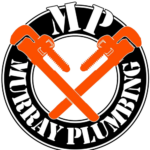Slab leaks can cause serious damage to homes. They occur when water pipes beneath a concrete foundation break or crack. Detecting slab leaks early can prevent costly repairs. This article explains how to recognize slab leaks, their causes, and steps to fix them.
What is a Slab Leak? A slab leak happens when a water pipe under the foundation leaks. Water escapes into the ground or into the home. This water can weaken the foundation and cause structural problems. Mold growth and higher water bills are common signs.
Signs of a Slab Leak
- Unexplained water bills: High water bills without increased usage suggest a hidden leak.
- Damp floors: Wet spots on floors can indicate water seeping from below.
- Warm spots: A warm patch on the floor may show a hot water line leak.
- Cracks in walls or floors: Shifting foundations from water damage can cause cracks.
- Musty smells: Persistent moisture promotes mold, causing odors.
- Sound of running water: If you hear water running when taps are off, suspect a leak.
Causes of Slab Leaks
- Corrosion: Old pipes corrode over time, especially in areas with hard water.
- Poor installation: Faulty plumbing can lead to early pipe failure.
- Abrasion: Pipes expand and contract with temperature changes, rubbing against concrete and wearing down.
- Soil pressure: Shifting soil can press on pipes, causing cracks.
- Earthquakes: Sudden ground movement may damage pipes.
How to Confirm a Slab Leak
- Check your water meter: Turn off water in the house. If the meter still moves, there is a leak.
- Conduct a pressure test: Professionals can test for pressure drops.
- Thermal imaging: Specialists use heat detection to find warm water leaks.
- Electronic amplification: Listening devices help locate the leak under concrete.
Risks of Ignoring Slab Leaks
- Foundation damage: Water weakens the concrete and soil.
- Mold growth: Moist environments lead to health risks.
- High water bills: Undetected leaks waste water.
- Flooring damage: Water can destroy wood, carpet, and tiles.
- Structural instability: Prolonged exposure leads to severe property damage.
Steps to Fix a Slab Leak
- Identify the location: Use professional help for accurate detection.
- Turn off the water supply: Prevent further damage.
- Decide on repair methods:
- Pipe re-routing: Reroute water lines around the foundation.
- Pipe lining: Insert epoxy lining inside pipes.
- Direct repair: Break concrete, repair the pipe, and patch the slab.
- Dry the area: Use fans and dehumidifiers to prevent mold.
- Inspect for secondary damage: Check for mold and structural issues.
Preventing Slab Leaks
- Monitor water bills: Regularly review statements for sudden changes.
- Inspect plumbing: Schedule routine plumbing checks.
- Install a water softener: Reduce corrosion in pipes.
- Maintain proper water pressure: Avoid excess strain on plumbing.
- Address soil issues: Keep soil moisture levels stable around the home.
When to Call a Professional Call a plumber if you see water stains, hear water sounds, or notice cracks. Professionals have the right tools for detection and repair. Attempting to fix slab leaks without training can worsen damage.
Cost of Slab Leak Repair Repair costs depend on the leak’s location and severity. Simple repairs can cost a few hundred dollars. Major repairs may reach several thousand. Early detection reduces repair costs.
Insurance Coverage for Slab Leaks Some home insurance policies cover slab leak repairs. Coverage may include detection, plumbing repairs, and foundation repair. Review your policy and speak with your agent.
Conclusion Slab leaks pose serious risks. Recognizing early signs helps reduce damage. Professional help is essential for accurate detection and repair. Preventive measures protect your home from future leaks. Always act quickly if you suspect a slab leak.
